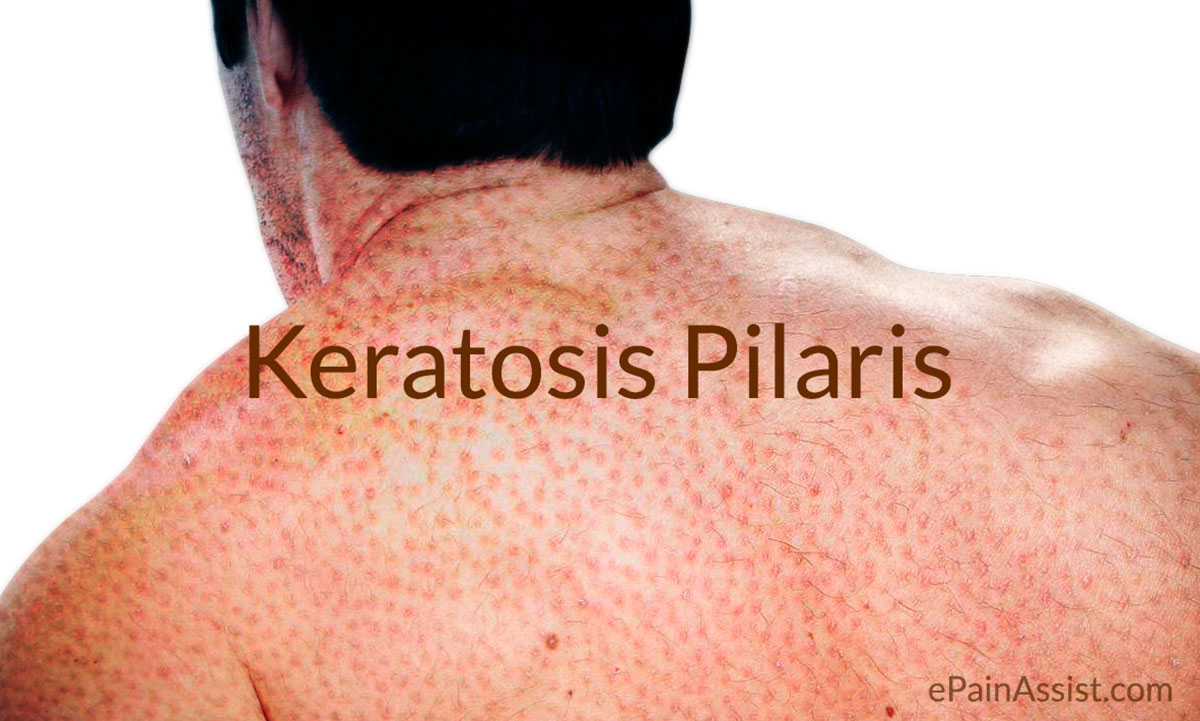Keratosis Pilaris (KP) is a common medical condition of the skin characterized by rough patches, small bumps resembling acne, present on the arms, cheeks, thighs, and buttocks. These bumps are often white or red in color. Patient usually does not feel any pain or itchiness in them. It is difficult to treat Keratosis Pilaris (KP); however, it is not a serious condition and it often resolves by the age of 30.
Treatment comprises of prescription medications, such as topical exfoliants, retinoids, laser therapy and conservative measures to improve the appearance of Keratosis Pilaris (KP).
Causes of Keratosis Pilaris (KP)
The cause behind Keratosis Pilaris is accumulation of the protein keratin, which protects our skin from infection and other harm. A scaly plug of keratin is formed which blocks the hair follicle opening. When there is formation of multiple plugs, then it results in areas of rough and bumpy skin.
The exact cause behind the keratin buildup is not known. According to experts, it can occur with genetic diseases or other skin problems like atopic dermatitis. This condition worsens if the patient has dry skin.
Signs and Symptoms of Keratosis Pilaris (KP)
Keratosis Pilaris (KP) commonly occurs in young children; however, it can occur at any age. Symptoms include:
- Small bumps, which are white or red in color.
- These bumps usually develop on the cheeks, upper arms, legs or buttocks.
- The affected regions feel rough and dry and can sometimes be itchy also.
- This condition worsens in winter, when humidity is low and skin is drier.
- Keratosis pilaris may also resemble goose flesh.
- Sometimes, there may be inflammation in these bumps resulting in scarring, especially the face.
- Keratosis Pilaris (KP) gradually resolves on its own without any treatment.
Investigations for Keratosis Pilaris (KP)
Medical history and skin examination is sufficient for the diagnosis of Keratosis Pilaris and further tests are usually not required.
Treatment for Keratosis Pilaris (KP)
Treatment comprises of medications to soften the keratin deposits and self care measures to improve the appearance. Regular use of medication helps in improving the appearance of the skin. But once the treatment is stopped, the condition tends to return and can persist for many years. This condition usually resolves by the age of 30 on its own. Treatment comprises of:
- Topical exfoliants comprising of creams containing alpha-hydroxy acid, salicylic acid, urea or lactic acid to help in moisturizing and softening the dry skin, so that the dead skin is loosened and gets removed easily. Side effects from the acids in these creams include: stinging, redness or irritation. These topical exfoliants are not suitable for young children.
- Topical retinoids are derived from vitamin A and they stimulate cell renewal and prevent blockage of hair follicle. Side effects include: redness, skin peeling and severe dryness. Topical retinoids comprise of Tretinoin and tazarotene. These medicines are not recommended during pregnancy and lactation.
- Laser therapy is beneficial for those types of Keratosis Pilaris (KP) where the patient experiences severe redness and inflammation. Strong spurts of light are targeted at the affected skin regions. Depending on the patient’s response, repeated sessions may be required for some months.
Home Remedies for Keratosis Pilaris (KP)
- Avoid rigorous scrubbing of your skin, as it can aggravate the condition more.
- After a bath, pat your skin dry very gently with a soft cloth or towel.
- After bathing, while the skin is still moist, apply a good moisturizer or a lubricating cream.
- OTC products which contain lactic acid or urea can be applied twice daily to help remove the excess keratin from the skin’s surface.
- A humidifier can be used to add moisture to the dry air inside the home.

